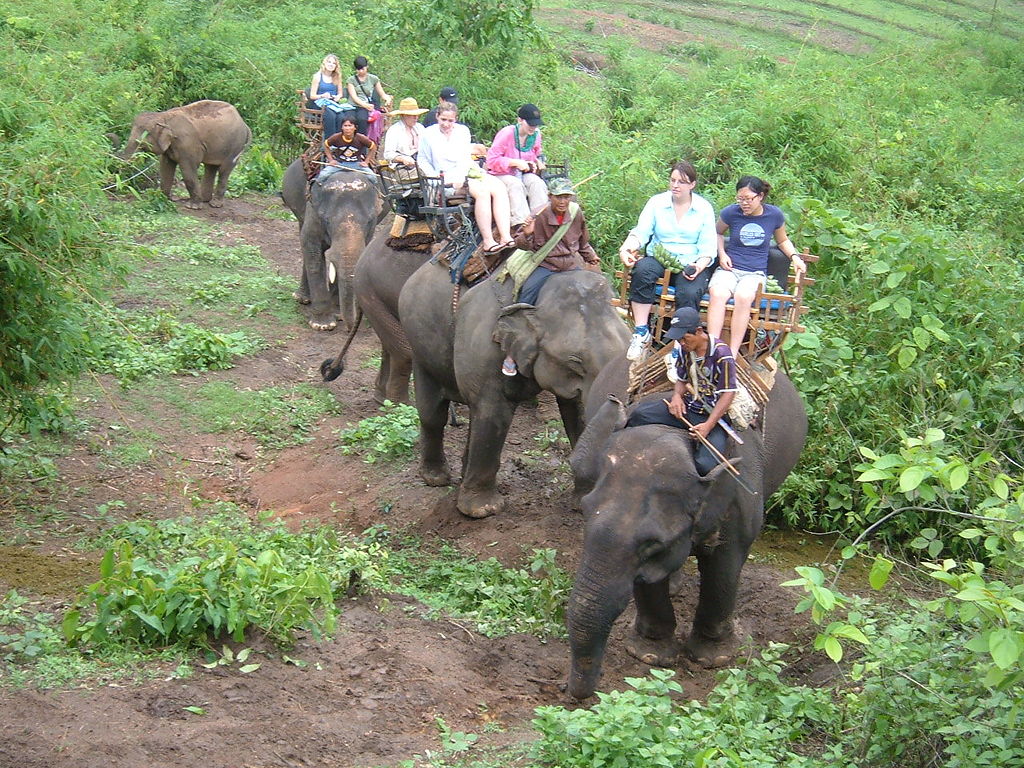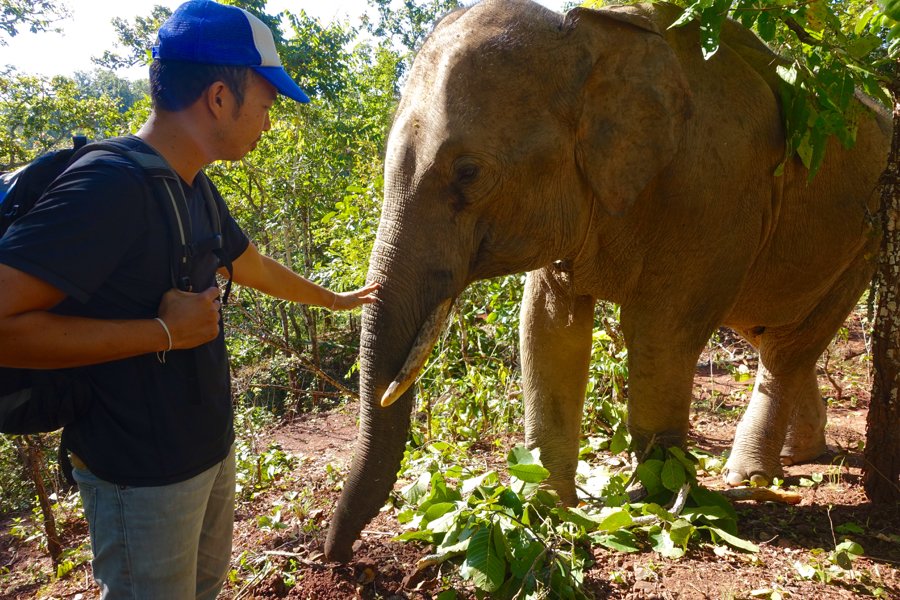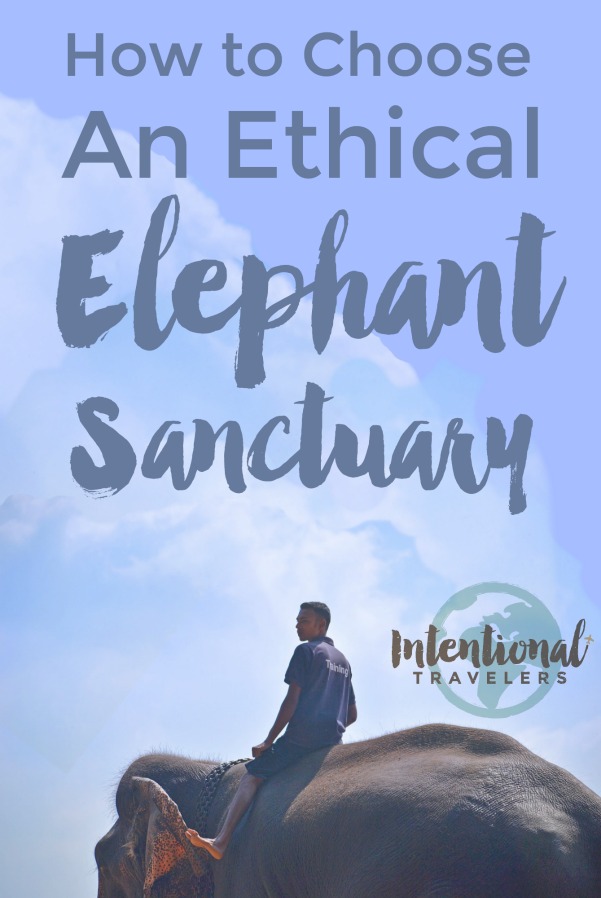How to Choose an Ethical Elephant Sanctuary
Visiting elephants is often at the top of travelers’ lists when visiting Southeast Asia. Elephant tourism has the potential to promote a greater appreciation for these giant creatures and influence their preservation.
Unfortunately, not all elephant tours are created equal.
Why the Cool Kids Are No Longer Riding Elephants
With the high demand for elephant attractions, many tour organizations exploit their elephants to increase profits.
Poor treatment of the animals is not always obvious from the outside. Elephant tours may slap on trendy catch phrases, like “sanctuary,” “conservation focused,” and “ethical,” but these terms have no certification or accountability to back them up.
So how do you know which elephant tour organization to trust?
Over the past couple years, there has been a movement, led by prominent responsible tourism organizations, to ban the riding of elephants from their tour listings. This has become a new benchmark for weeding out unethical wildlife tours.
This movement has grown to the point where many savvy travelers equate elephant rides with exploitation. The truth, however, is not so black and white.
A More Holistic Approach to Ethical Elephant Tours
Canadian Forest Industries, 1902. Photo credit: Wikimedia
Riding elephants has long been a part of human history, especially in Asia.
Up until 1989, elephants worked in the logging industry with humans on their backs, until deforestation became an issue in much of Southeast Asia. Out of work and with almost no natural habitat remaining, these gentle giants were plucked up by the tourism industry, where the practice of elephant riding continued and compounded.
Photo credit: Wikimedia Commons
During our month in Chiang Mai, Thailand, we had the opportunity to visit a new and unique elephant sanctuary about five hours away.
What sets Kindred Spirit Elephant Sanctuary apart is that it’s one of the only places to see Asian elephants in their natural environment.
Also, their operations are deeply integrated with a Karen hill tribe village – a small community that have been “the elephant keepers” for generations.
The four elephants at Kindred Spirit each held “careers” at tourist camps before they were returned to the forest to graze in freedom. According to our tour leaders, an elephant can actually sustain a human rider or two on their back without problem.
The real issue is how elephants are treated in captivity.
The process of “breaking” an elephant in order for it to be trainable can be extremely cruel. Once employed, long hours – where elephants work to the point of exhaustion – is not uncommon.
Harmful restraining methods may be used in parts of the camp that tourists don’t see. Elephants are often made to perform activities that are completely unnatural to them, slowly degrading their instincts and affecting their wellbeing.
On top of all this, the purchase of elephants in countries like Thailand – regardless of whether it’s for tourism or for a rescue sanctuary – fuels the poaching of baby elephants across the border in Burma and Laos.
So although elephant riding has become the big buzz word in responsible travel circles, we actually have to look at the bigger picture.
What to look for in an ethical elephant experience
First, there are a few things you can look for with any animal-related program to determine if the animals are being treated properly.
The “Five Freedoms” of animal welfare are:
* Freedom from hunger and thirst
* Freedom from discomfort
* Freedom from pain, injury, or disease
* Freedom to express normal behavior
* Freedom from fear and distress
Our guides at Kindred Spirit Elephant Sanctuary gave us a few more tips on what to look for in an ethical elephant sanctuary:
Necessary restraints on elephants
Restraining and chaining up elephants is sometimes necessary to keep them from foraging in peoples’ farms or to ensure they get proper veterinary care. You can be doubtful if you hear a sanctuary claims they “never” chain their elephants.
However, restraining elephants from socializing and foraging for a long time – like whenever tourists aren’t present, for example – can be harmful.
Limited work hours for elephants
Elephant work hours should be minimal. By nature, an elephant spends pretty much all of its waking hours foraging, so any time at work cuts into this essential daily activity. More than a half day of work can hinder the elephant’s freedom to express normal behavior (see Freedom #4 above).
Appropriate activities for elephants
Speaking of normal behavior, elephants in the tourism industry are often trained to do some pretty abnormal things.
Also, they’re intelligent animals that need mental stimulation. This means that repetitive activities with tourists can affect them.
Even something seemingly beneficial, like getting a bath or being fed bananas can be problematic if it’s repeated multiple times a day, every day – all in order to give tourists a certain experience.
Learn more about the Kindred Spirit Elephant Sanctuary & Hill Tribe Homestay via our full tour review here.
Read up on other ethical animal tourism alternatives here.
Like this post? Pin it for later or share with a friend!










